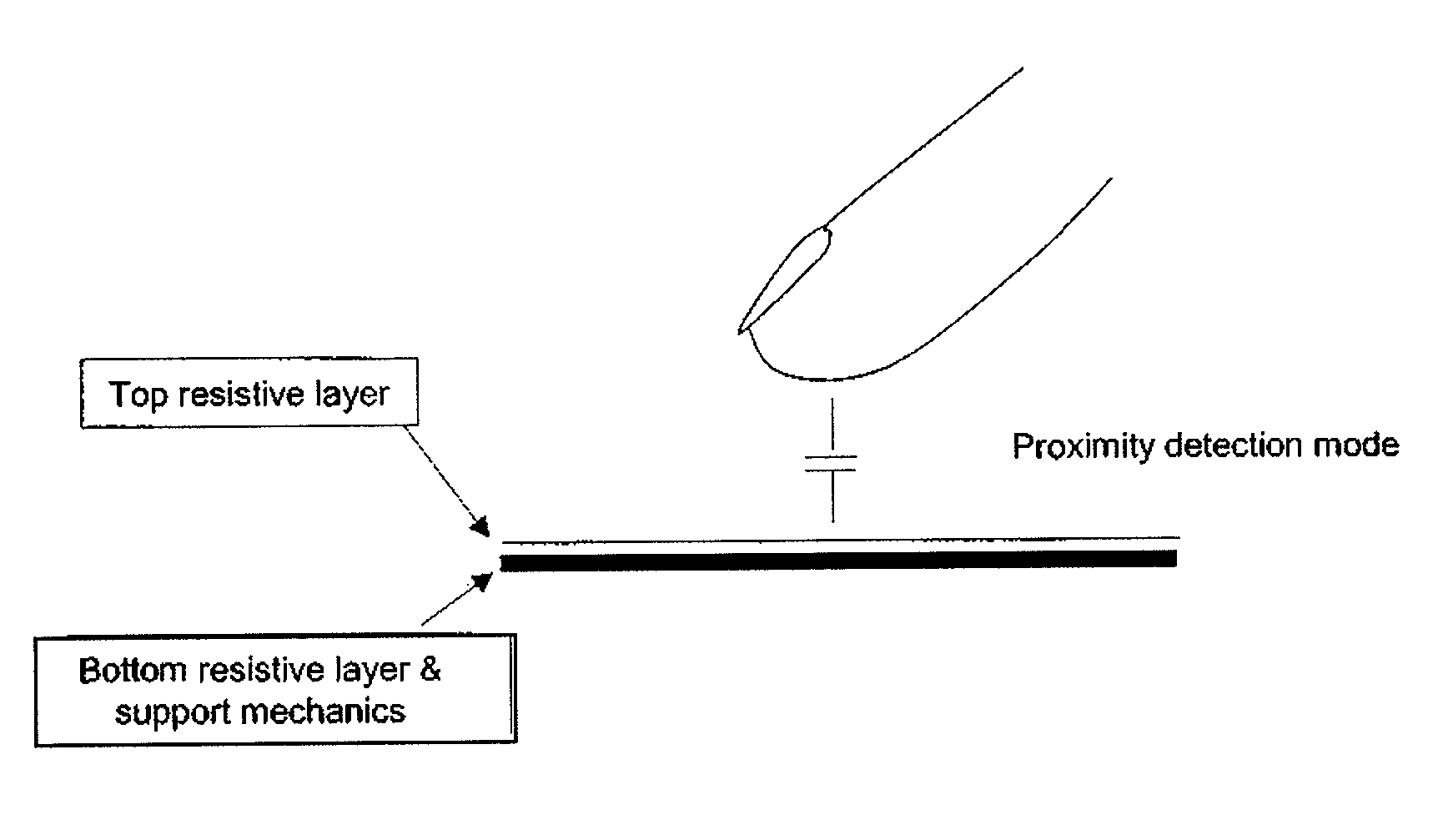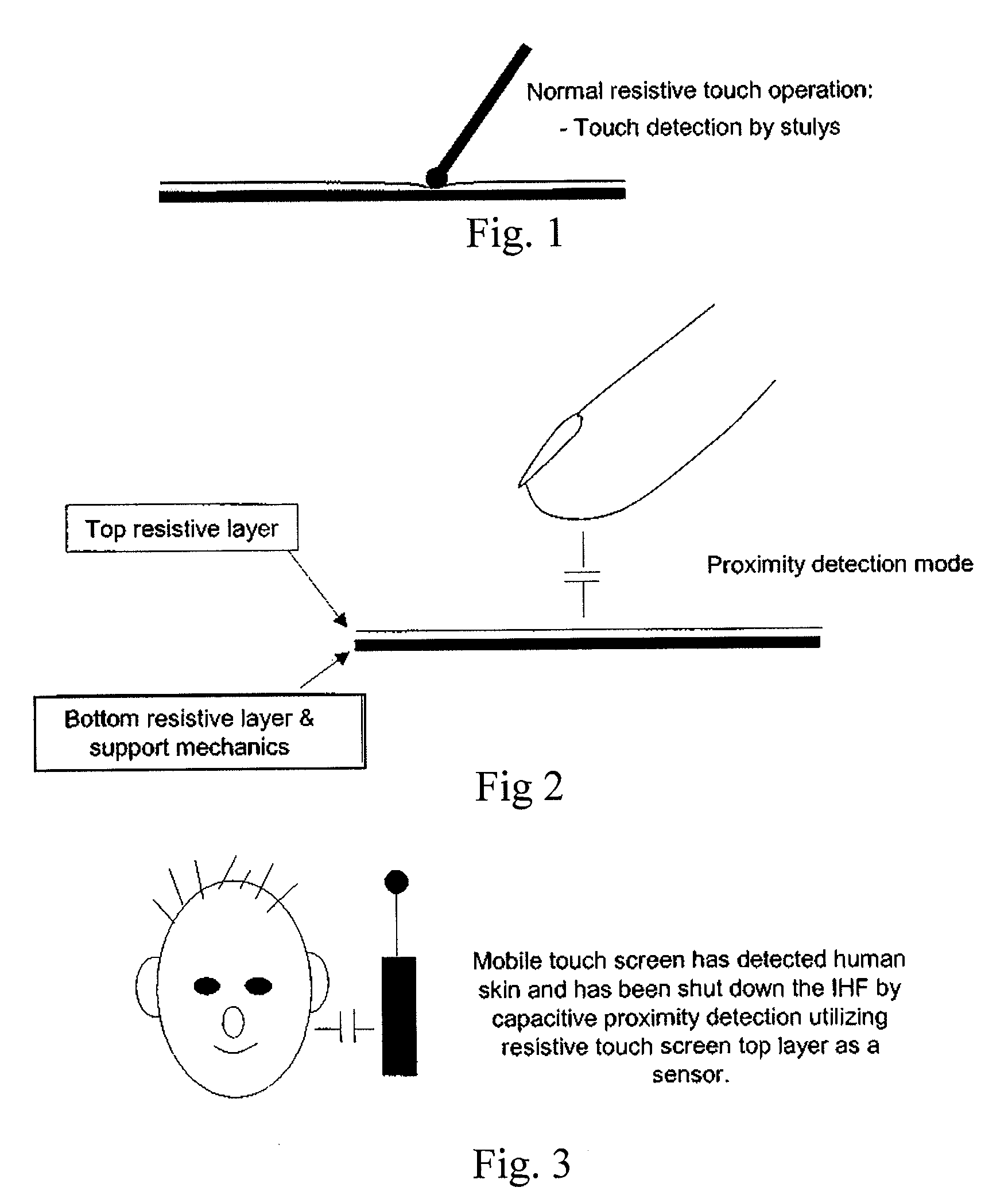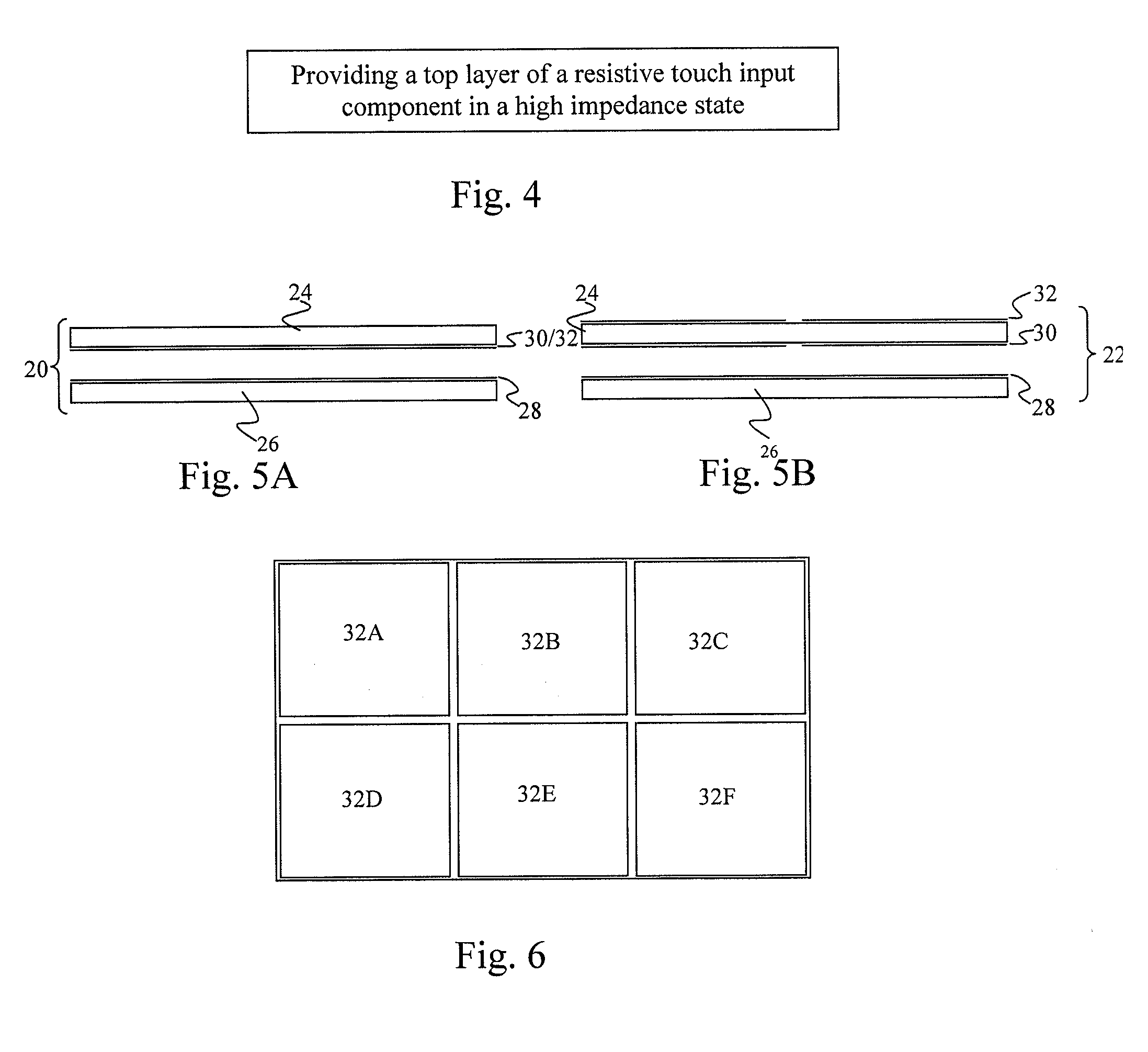Method and device for operating a resistive touch input component as a proximity sensor
a technology of proximity sensor and input component, which is applied in the direction of mechanical pattern conversion, instruments, sustainable buildings, etc., can solve the problem of few proximity sensors capable of operating, and achieve the effect of preventing wrong input detection
- Summary
- Abstract
- Description
- Claims
- Application Information
AI Technical Summary
Benefits of technology
Problems solved by technology
Method used
Image
Examples
Embodiment Construction
[0061]In the detailed description which follows, identical components have been given the same reference numerals, regardless of whether they are shown in different embodiments of the present invention. In order to clearly and concisely illustrate the present invention, the drawings may not necessarily be to scale and certain features may be shown in somewhat schematic form.
[0062]FIG. 1 depicts a resistive touch input component such as a touch pad or a touch screen. The touch input component has an upper layer and a bottom layer separated by (not depicted) spacer components. As used herein, upper and lower layers refer to a first outboard layer and a second inboard layer without regard to the overall orientation of the device which includes the touch input component. The stylus or pen exerting a force on the upper layer of the touch input device brings the upper conductive layer and the lower conductive layer of the touch input device in electrical (or galvanic) contact. By using a ...
PUM
 Login to View More
Login to View More Abstract
Description
Claims
Application Information
 Login to View More
Login to View More - R&D
- Intellectual Property
- Life Sciences
- Materials
- Tech Scout
- Unparalleled Data Quality
- Higher Quality Content
- 60% Fewer Hallucinations
Browse by: Latest US Patents, China's latest patents, Technical Efficacy Thesaurus, Application Domain, Technology Topic, Popular Technical Reports.
© 2025 PatSnap. All rights reserved.Legal|Privacy policy|Modern Slavery Act Transparency Statement|Sitemap|About US| Contact US: help@patsnap.com



